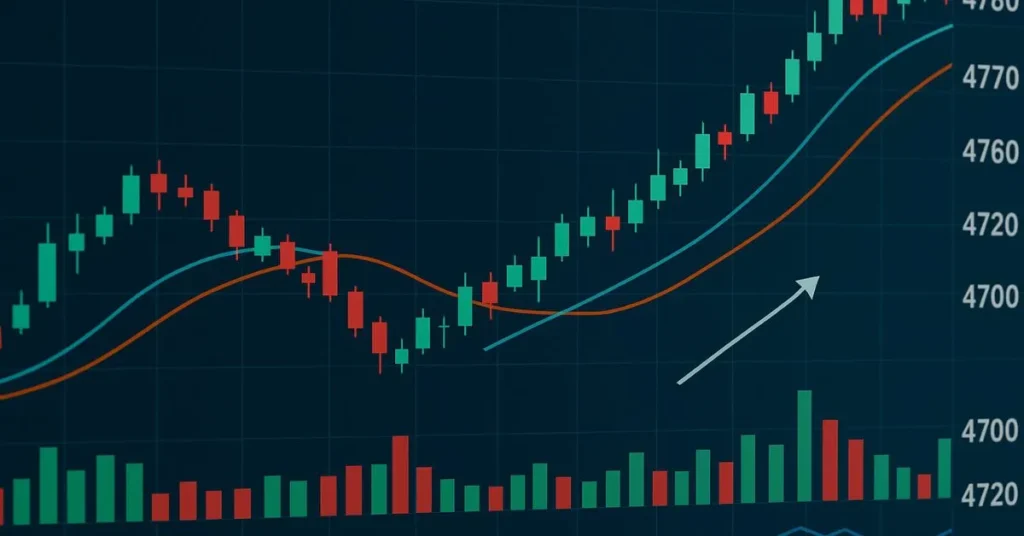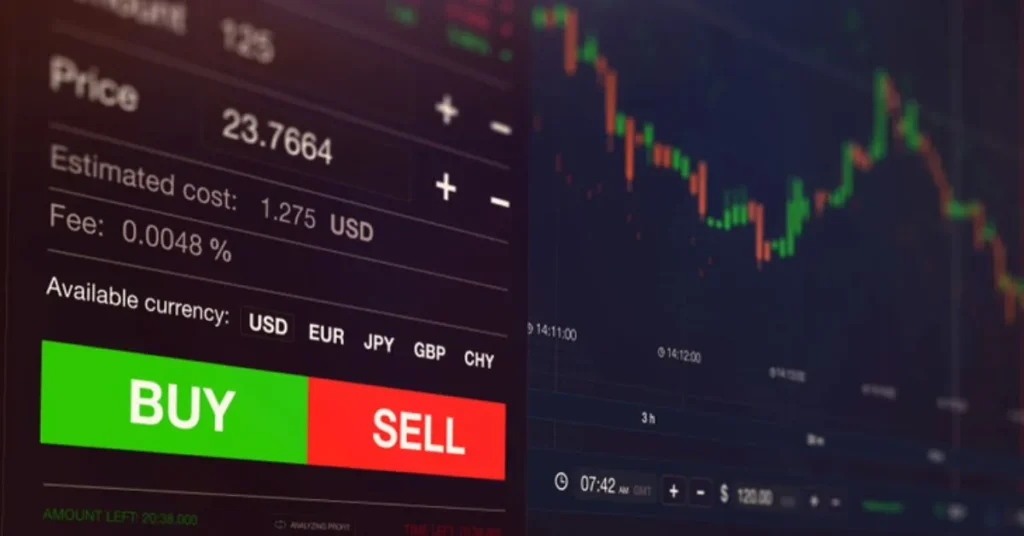Trading is the act of buying and selling financial instruments—such as stocks, currencies, commodities, or derivatives—with the goal of profiting from price fluctuations. Traders analyze market data, economic news, and technical indicators to identify opportunities where the value of an asset is likely to move in a favorable direction. Unlike long-term investing, Trading often emphasizes shorter timeframes and more frequent transactions.
Trading thrives on information, discipline, and adaptability. From defining key concepts to delving into real-world examples, this article aims to equip you with both knowledge and perspective. Let’s unpack the world of Trading and discover how you can develop a robust approach that fits your goals.
Grasping the Fundamentals of Trading
Before placing your first order, it’s crucial to understand the core of Trading. At its heart, Trading involves exchanging financial instruments—such as stocks, commodities, or currencies—with the expectation of profiting from price changes. Successful Trading relies on two pillars: timing and analysis.
Timing means knowing when to enter and exit positions. Analysis can be technical, focusing on charts and indicators, or fundamental, examining economic data and company performance. By combining these approaches, traders aim to increase their edge. Keep in mind that even the most seasoned traders accept losses; effective risk management ensures one setback doesn’t derail your entire Trading journey.
Exploring Key Types of Trading Strategies
Every trader develops unique methods, but most strategies fit into broad categories. Day Traders involves executing numerous quick trades, capitalizing on tiny price movements. Swing trading holds positions for days or weeks, aiming to ride short-term market swings. Position trading stretches over months or years, focusing on long-term trends.
- Momentum trading: Identifying and following strong price trends
- Mean reversion: Betting prices will return to their average after extreme moves
- Arbitrage: Exploiting price differences across markets
Choosing a strategy aligns with your schedule, risk tolerance, and capital. I’ve found that testing multiple approaches in a demo account helps reveal which style resonates with your personality before committing real funds.
Embracing the Psychological Side of Trading
While charts and data guide decisions, psychology often dictates outcomes. Emotions such as fear and greed can cloud judgment, leading to impulsive trades or premature exits. Developing mental discipline is as vital as mastering technical indicators in Trading.
A simple practice is keeping a trading journal: record your rationale for each trade, emotional state, and outcome. Over time, patterns emerge—perhaps you exit winning trades too early or overleverage after a loss. Acknowledging these tendencies allows you to proactively adjust behavior, strengthening your overall Trading approach.
Applying Technical Analysis Tools
Technical analysis equips traders with visual and statistical tools to forecast potential price movements. Common indicators include moving averages (MA), relative strength index (RSI), and Bollinger Bands. Each tool offers unique insights:
- Moving averages smooth out price data to reveal trend direction.
- RSI measures the speed and change of price movements, flagging overbought or oversold conditions.
- Bollinger Bands expand and contract around price action, signaling volatility.
By combining multiple indicators—a method known as convergence—you can filter out false signals. For instance, waiting for RSI to confirm a breakout above a key resistance level can reduce the chances of entering a whipsaw market.
Leveraging Fundamental Analysis in Trading
Fundamental analysis centers on evaluating underlying factors that drive asset values. In stock Trading, this might involve scrutinizing earnings reports, revenue growth, and management commentary. In forex, you track interest rates, inflation data, and geopolitical events.
A real-world example: when a central bank unexpectedly raises interest rates, its currency often strengthens. Traders who monitor economic calendars and anticipate such announcements can position ahead of time. Fundamental analysis isn’t about predicting every market movement but about understanding catalysts that influence sentiment and price in Trading.
Crafting a Robust Risk Management Plan
Risk management separates successful traders from those who vanish in volatile markets. Key principles include setting stop-loss orders to limit downside and sizing positions relative to your overall portfolio. A common rule is risking no more than 1–2% of capital on any single trade.
- Determine your maximum acceptable loss per trade.
- Use stop-loss orders placed beyond logical chart levels.
- Adjust position size based on volatility: more volatile assets warrant smaller positions.
Adherence to these guidelines fosters consistency. In my experience, traders who neglect risk controls rarely survive long-term, regardless of how brilliant their strategy might seem.
Defining Your Unique Trading Plan
A plan is your personalized blueprint for entering and exiting markets. It outlines criteria such as:
Writing your plan forces clarity around decision-making. Consider it a contract with yourself: by following predefined rules, you remove emotion from critical moments in Trading. Review and refine your plan monthly to adapt to evolving market conditions and personal goals.
Selecting the Ideal Markets for Trading
Trading opportunities span various arenas—stocks, bonds, futures, commodities, and currencies. Each market has distinct trading hours, liquidity profiles, and cost structures. For instance, forex trading operates around the clock, providing flexibility but also exposing you to unexpected gaps during low-liquidity periods.
If you prefer high-speed setups, commodities like crude oil and gold offer ample volatility. Equities, by contrast, may suit longer-term position traders focused on corporate fundamentals. By sampling different markets in a simulated environment, you’ll identify the arena that best complements your strategy and lifestyle.
Navigating Trading Platforms and Technology
The right platform enhances efficiency and clarity. Major providers like MetaTrader, Thinkorswim, and TradingView deliver charting capabilities, backtesting modules, and automated trading features. When evaluating software, prioritize:
- Reliability: Minimal downtime and fast order execution.
- Charting tools: Customizable indicators and drawing tools.
- Community features: Shared scripts, ideas, and social trading.
Integration with your broker’s infrastructure is key; some platforms offer built-in access to multiple asset classes. I find that choosing software with a robust online community accelerates my learning curve as I explore new indicators and strategies.

Mastering Timeframes in Trading
Timeframe selection shapes your trading rhythm. Scalpers analyze 1- to 5-minute charts, swinging traders lean on 1- to 4-hour timeframes, while position traders often reference daily or weekly charts. Each timeframe presents pros and cons:
- Short timeframes offer frequent signals but can be noisy.
- Longer timeframes filter out noise but demand patience.
Align your chosen timeframe with both your strategy and temperament. If you struggle to sit through overnight positions, a day-trading approach may prove stressful. Conversely, if you dislike constant screen time, a swing-trading plan on daily charts might be more fitting for your Trading style.
Journal Keeping: Tracking Your Trading Performance
A trading journal is your mirror—capturing wins, losses, and missed opportunities. Include details such as entry price, stop-loss level, trade rationale, and psychological notes. Reviewing this log weekly can uncover hidden biases:
- Do you exit winners too early due to fear?
- Are you averaging down in losing trades beyond your plan?
- Do certain market conditions consistently trip you up?
With these insights, you can refine rules and cultivate strengths. I’ve seen traders transform by simply recognizing a pattern of revenge Trading after a loss and then instituting a cooling-off period to break that habit.
Continuous Education in the Trading World
Financial markets never stand still. Economic developments, regulatory changes, and technological innovations constantly reshape Trading landscapes. Commit to ongoing learning through:
- Books by seasoned traders (e.g., “Market Wizards” by Jack D. Schwager).
- Online courses from reputable platforms like Coursera and Investopedia (https://www.investopedia.com).
- Trading podcasts and webinars for real-time market commentary.
Embrace a growth mindset—view each setback as a lesson. By investing time in education, you’ll refine your edge and adapt to new market dynamics in Trading.
Regulatory and Tax Considerations
Before diving in, understand the legal framework governing Trading in your region. Regulations can dictate margin limits, reporting requirements, and eligibility for certain instruments. Consult resources such as:
- Your country’s securities regulator website (e.g., https://www.sec.gov in the US).
- Professional tax advisors well-versed in trading profits and losses.
Properly documenting trades ensures compliance and optimizes your tax position. In many jurisdictions, capital gains and losses must be reported annually, and specific rules govern the treatment of day-trading gains.
Integrating Automated Trading Solutions
Automation can elevate your Trading by executing rules-based strategies without emotion. Tools like Expert Advisors in MetaTrader or custom scripts on TradingView allow you to backtest and deploy algorithms. Benefits include:
- Round-the-clock market monitoring.
- Faster order execution than manual inputs.
- Elimination of discretionary biases.
However, thorough testing is crucial. I recommend forward-testing on a demo account for several months before allocating live capital. Even robust systems can falter under unseen market stress conditions.

Learning from Real-World Trading Examples
Case studies illuminate theoretical concepts. Consider the 2010 “Flash Crash,” where algorithmic Trading triggered rapid market collapse before rebounding. Traders who relied solely on automated logic without risk controls faced steep losses. In contrast, disciplined professionals with circuit breakers and defined volatility filters navigated the turbulence and profited from the rebound.
Analyzing such events deepens your understanding of both technological and human factors in Trading. It also underscores the value of stress-testing your strategies against rare but impactful scenarios.
Balancing Trading and Personal Well-Being
The adrenaline of Trading can lead to overwork and burnout. Set boundaries: define specific trading hours, schedule regular breaks, and practice stress-relief techniques such as mindfulness or light exercise. A healthy mind fuels better decision-making.
In my observation, traders who treat their Trading like a profession—complete with structured routines and self-care—outperform those driven purely by the thrill of the market. Prioritizing well-being enhances focus and prevents emotionally driven mistakes.
Cultivating Patience and Discipline
Markets don’t owe you profits every day. Often, the best Trading move is waiting for high-probability setups rather than forcing activity. Develop patience by:
- Using alerts instead of staring at screens continuously.
- Restricting the number of trades per week to your plan’s limit.
- Reflecting on missed setups to learn rather than lament lost opportunities.
By valuing quality over quantity, you nurture disciplined Trading habits that serve you through both bull and bear phases.
Common Pitfalls and How to Avoid Them
Even the savviest traders encounter challenges. Beware of:
- Overleveraging: amplifies gains but also magnifies losses.
- Chasing losses: trying to quickly recover losses often deepens drawdowns.
- Ignoring market context: technical signals can fail in unusual macro environments.
Counter these by adhering strictly to your Trading plan, maintaining adequate capital reserves, and regularly revisiting both your strategy and mindset to stay in alignment with market realities.
Harnessing Social Trading Communities
Engaging with fellow traders can accelerate learning. Platforms like eToro and ZuluTrade enable you to observe experienced traders’ portfolios and strategies. While social Trading provides diverse perspectives, exercise caution:
- Avoid mindless copying: understand the rationale behind each trade.
- Confirm performance: review historical track records over multiple market cycles.
By blending community insights with your own analysis, you enrich your Trading toolkit without sacrificing personal responsibility.
The Role of Market News and Economic Calendars
Timely information is vital in Trading. Economic calendars list upcoming events—interest-rate decisions, employment reports, and GDP releases—that can move markets sharply. Integrate these tools into your routine:
- Review the week’s key events before the market opens.
- Adjust or pause Trading around high-volatility announcements.
- Analyze post-release reactions to refine future strategies.
Staying informed prevents surprises and allows you to position around predictable market catalysts.
Advanced Techniques: Options and Derivatives
As you grow in confidence, consider expanding into options or futures. These derivatives offer leverage and complex strategies, from simple calls and puts to spreads and straddles. Benefits include:
- Hedging existing positions.
- Speculating on volatility rather than direction.
- Generating income through premium collection.
Options Trading demands rigorous study; start with basic strategies and paper-trade until you grasp Greeks, margin requirements, and exercise mechanisms.
Developing a Long-Term Mindset in Trading
While short-term gains capture headlines, cultivating a long-term perspective nurtures resilience. Periodically step back to assess performance over months or quarters rather than days. Ask yourself:
- Are my returns consistent with risk taken?
- Have I adapted to evolving market regimes?
- Is my capital base growing while drawdowns remain manageable?
This macro lens reduces the emotional whiplash caused by daily fluctuations and anchors your Trading in enduring principles.

Concluding Thoughts: Embarking on Your Trading Journey
Trading is a multifaceted discipline blending analysis, strategy, and self-awareness. From mastering technical and fundamental tools to honing psychological resilience, each element contributes to sustainable success. By building a clear plan, managing risk diligently, and dedicating yourself to continuous learning, you transform confusion into clarity.
Remember that every trader started with zero trades executed. Embrace the learning curve, refine your approach iteratively, and remain patient. With commitment and discipline, you’ll unlock the true potential of Trading as a path to financial and intellectual growth.



